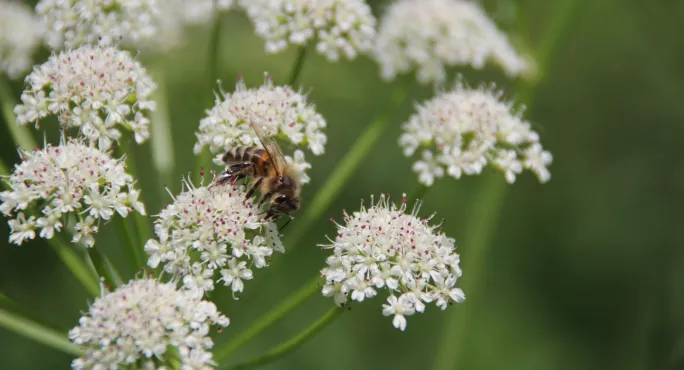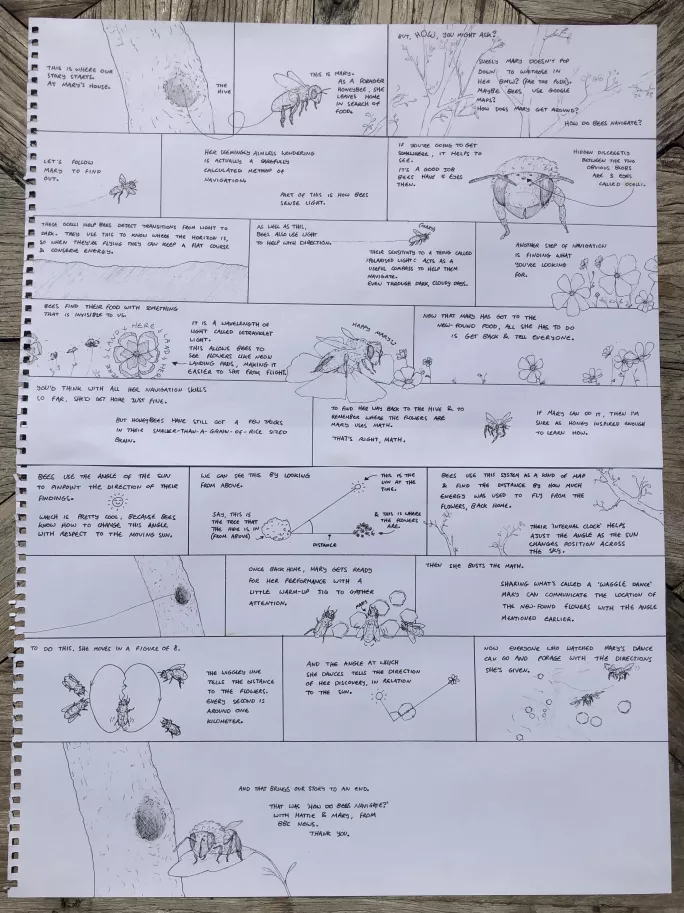- Home
- Listen to the bees: 5 ways nature tasks inspire pupils
Listen to the bees: 5 ways nature tasks inspire pupils

“Go out and find some bees,” is what we told the students. “Spend some time with them. Listen, and see what happens.”
“Puzzled”, “baffled” and “confused” is how the students admitted they felt on hearing this task.
But we were confident it would work.
As teachers at Brockwood Park School, an international boarding school in Hampshire founded by the philosopher and educator Jiddu Krishnamurti, we co-teach a course called Global Issues.
This course aims to focus on two of the school’s central intentions: help students develop a global outlook and find ways to address the interconnected crises we face.
One way we do this is by looking at our relationship with nature to investigate our perception of the world.
Listening to bees struck us as an idea that could help the students further in this investigation, in a practical and engaging way.
When we gave the students the homework of listening to bees, we had anticipated the confusion. It is inevitable when students are not given a clear direction. But this confusion, in our point of view, is crucial.
Experiential learning takes place when our established thinking patterns are challenged. The confusion that then arises creates the possibility to see something new. And we need new thoughts: the world’s many crises cannot be solved with the same minds that created them.
This is what we learned from our class - with insights from the students themselves:
1. Nature-inspired learning meets students exactly where they are
The task of listening to bees led the students to a variety of projects.
Hattie made a comic (see below) that explains the way bees navigate from their hive to flowers and back, which involved learning in the fields of biology, mathematics and art.
Finn developed an essay about the impact of capitalism on the natural world.
He started his research with the Californian almond plantations and the effect those monocultures have on commercially kept bees.
Julia planted a bee-garden in her backyard with her younger brother, reflecting on the value of environmental education for children and documenting her work through photography.
The students chose fields of study and subjects they had already been interested in, but now found ways to practically engage with.
Nature-led learning also removes competition and comparison from education.
The students in our class formulated their own projects, and went off in different directions.

2. Nature-inspired learning gives students ownership of their learning
Nature is not a concept - it is real. Being in touch with something real brings curiosity back into learning.
“I think I am beginning to see my research as not just work that I have to do for school, but rather looking at the whole project as a complete step into looking at things in a different way”, wrote Grace (see her bee journal below).
Julia reflected in the very beginning of her project on the way she learns best: “I want to do something that requires me to work hands-on, and of which I can actually see the effects. Because I have come to understand that is how I work best.”
The open-ended task allowed her to put that understanding into practice.
This isn’t without its challenges either: “At some point, I felt I was tumbling down a rabbit hole,” said Hattie. There seemed to be no end to the research I had to do. But I managed to get myself out, and focus.”
If we had set a task with a clear target, she would not have had this opportunity.
Of course the task wasn’t without its issues.
Sometimes students struggled at times with motivation and procrastination - this was caused partly by the fact that soon after we had started this term, the school closed due to the Coronavirus pandemic and the students had to finish their projects at home.
3. More time outdoors leads to increased happiness
All students experienced that spending time in nature awakened their senses and made them more aware of the world around them.
“I squatted by the hedgerow listening to that unique sound of the wind rustling through leaves, and inhaling the sweet distant smell of gorse. Nature-led learning seems lovely so far”, Grace wrote in the second week of the term.
Eva added: “Each time we learn something from nature and apply it to our lives, we feel better, more complete, happier. It doesn’t really matter what it is; it brings us closer to ourselves and who we truly are”
4. Nature-inspired learning challenges teachers, too
Allowing students to start an independent investigative process requires teachers to learn alongside them - which asks for flexibility and attentiveness.
This way of learning also breaks down the artificial barriers between different subjects in conventional education.
“I felt that in my project, I could combine the things that I feel passionate about: science and art”, said Hattie at the end of the term.
Who are we to say these topics should be studied separately?
5. The natural world acts as a mirror of ourselves and society
The students’ research also led to more personal reflections that helped them question themselves and the world around them.
“I have never been fully committed to going vegan, not buying any plastic or even being a hundred percent vegetarian, and I refrain from saying that I care about the Earth”, said Finn in his final presentation.
“I don’t feel that it is my place to protest against climate change when I am probably causing it, simply by living with so many luxuries and not removing myself from them. I can’t help but question: do we actually care? Do I actually care?”
The climate protests appeared in other reflections as well, like in Abhisheka’s essay. “At the time, these protests felt relevant and important. Once I got over the initial excitement of being surrounded by thousands of people who, broadly speaking, held the same views as me, I started asking myself if this was really helping anyone.
“Was it normal for this much litter to be left on the streets after demonstrations? Did shouting insulting comments help meaningful climate action? Surely I’d be better off rewilding the garden?”
After a term of nature-inspired learning, we feel that this assignment helped the students to find clarity within themselves.
“Living in a bee-friendly way means living with more awareness of my surroundings and being more conscious of my actions.
“It means to value other lives and to treat it and respect it for what it is”, is how Julia finished her project presentation at the end of the term.
Clarity brought forward by a student’s curiosity, through an experience.

Dolf de Groot and Olya Maiboroda are residential teachers at Brockwood Park School.
Finn Cameron-Turner, Abhisheka Dinsmore-Tuli, Hattie Greenwood, Grace Harpur, Eva Martinson and Julia Trevino are students at the school
Keep reading for just £1 per month
You've reached your limit of free articles this month. Subscribe for £1 per month for three months and get:
- Unlimited access to all Tes magazine content
- Exclusive subscriber-only stories
- Award-winning email newsletters